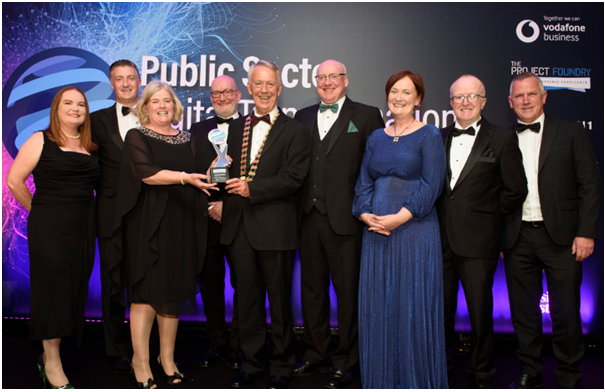Digitising Galway's Graveyard Heritage: Open Data in Action
17 Deireadh Fómhair 2023
In 2022, a transformative project backed by the Open Data Engagement Fund and the Heritage Council came to life. At the Chambers Ireland Excellence in Local Government Awards, it was named overall winner of the ‘Best Community Engagement’ category of the Public Sector Digital Transformation Awards 2023.
Galway County Council, in collaboration with community groups and archaeological consultants, embarked on an ambitious project to digitise Galway's graveyard heritage. The Council's Heritage and Geographical Information Systems (GIS) sections initiated a review to streamline and standardise the survey process, creating a freely accessible digital dataset. The Built to Share principle is central to the project and it is scalable to include other local authorities or subject areas.
Over 25,000 memorials have been surveyed, and the data is now accessible through a publicly available web application (https://bit.ly/3pW0yfP).
The project's primary objectives included:
- Supporting Communities: Making graveyard data available as open data for all to connect with their heritage.
- Digital Transformation: Replacing paper-based and semi-digital methods with a streamlined digital survey process. Providing technical training to local community groups to allow them to digitally collect their data themselves.
- Innovative Technology: Employing drone technology for ortho imagery and 3D products.
- Data Migration: Developing a methodology to transition historical surveys into the digital platform.
- Education and Support: Assisting stakeholders in effectively utilising the system components.
- Web-Based Memorial Search Application: Enabling users to search, view, analyse, and download memorial data.
The project's impacts are substantial. It has made graveyard information accessible globally, preserving inscriptions vulnerable to degradation due to weather and neglect. Communities can delve into local history, fostering civic pride and interest in genealogy, archaeology, and art history. Digital mapping aids cultural tourism, assists research and analysis, and generates new insights.
The project was marked by innovation, employing a user-centric approach, cloud-based GIS technology, drones, and automated data workflows. The data is shared under an open license, aligning with Open Data Engagement Fund objectives.
This project is a testament to how digitisation can preserve and promote local and national heritage and provide a working example of open data in action for everyone.

 Derilinx
Derilinx
